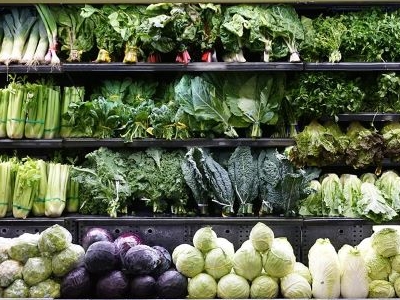Four Carleton graduate students have won 2013-14 awards from The Canadian Northern Studies Trust. A full list of all of the winners is available on the Association of Canadian Universities for Northern Studies website.
 Brendan O’Neill
Brendan O’Neill
PhD Candidate, Geography
W. Garfield Weston Award for Northern Research (PhD), $50,000
Title: Permafrost conditions and terrain stability considerations on Peel Plateau, NWT
My research examines how air temperatures and environmental factors, particularly snow and soil moisture conditions, control the duration of freezeback and resulting ground temperatures in permafrost. Permafrost temperatures are inherently linked to air temperatures and generally decline moving northward. However, snow and soil moisture also strongly influence the freezeback of the active layer and mean annual temperatures of the underlying permafrost. Snow insulates the ground from cold air, and latent heat is released when soil moisture freezes, delaying freezeback of the active layer and limiting ground cooling in winter. Climate models predict increased precipitation in the fall and rising winter air temperatures. This research will examine the respective influences of air temperature, snow, and soil moisture on the freezeback period and resulting permafrost temperatures, in order to investigate the impacts of climate change on permafrost terrain stability. The research takes place along the Dempster Highway on Peel Plateau near Fort McPherson, NWT. Numerous temperature sensors have been installed at different elevations and in varied terrain to capture a range of air temperatures and environmental conditions. Additionally, sensors installed beside the Dempster Highway embankment will help examine permafrost degradation along the road and inform maintenance and management of northern highways.
 Jennifer Provencher
Jennifer Provencher
PhD Candidate, Biology
W. Garfield Weston Award for Northern Research (PhD), $50,000
Title: Drivers of variation in reproductive output in a changing environment in relation to parasites and contaminants
Both parasites and mercury may influence wildlife, but how these two interact to affect wildlife when they are exposed to both is still unclear, especially in an Arctic where both parasites and levels of mercury are predicted to increase and change in the coming decades. My work consists of two main parts to examine how both parasite and mercury (independently or together) affect bird during times of energetic stress (migration and breeding). The first component of my project involves working directly with hunters in northern communities to study parasites and mercury in birds during their migration as they return to the Canadian Arctic each spring. The second component of my work consists of conducting experiments manipulating bird parasite burdens on the East Bay Island eider colony, a long-term monitoring site where thousands annually nest on this small island in northern Hudson Bay. I also lead an annual marine bird dissection workshop held in collaboration with the Nunavut Arctic College in Iqaluit each year (funded by the Nasivvik Centre) where the birds we collected for research are used to provide educational opportunities for local students.
 Erica Oberndorfer
Erica Oberndorfer
PhD Candidate, Geography and Environmental Studies
Canadian Polar Commission Scholarship $10,000
Title: The shared stories of people and plants: Cultural and ecological relationships between people and plants in Makkovik, Nunatsiavut (Labrador)
Plants are often characterized by external observers as being of little importance to northern peoples. In the Inuit community of Makkovik (Nunatsiavut, Labrador), residents express a very different perspective on the importance of people-plant relationships. Makkovimiut (Makkovik community members) describe a rich tapestry of regionally unique cultural plant practices that promote individual and community well-being, help to strengthen connections to the land and strongly support community traditions of sharing and reciprocity. This research responds to local research priorities shared by Makkovimiut during collaborative research planning. In particular, it seeks to document “the stories people tell about plants” including plant practices, ways of caring for plants, and the worldviews that anchor people-plant relationships and to help integrate these stories into local education, wellness, and conservation programming. Cultural knowledge is equally at the heart of interdependent ecological research into “the stories plants tell about people,” which considers how cultural harvesting and management practices can alter the distribution and abundance of plant species, effectively creating signatures of people-plant relationships in the landscape. This collaborative research aims to encourage discussion on the cultural aspects of northern biological systems and the ways in which the health of cultural and biological systems is deeply intertwined.
 Sarah Quann
Sarah Quann
Masters Candidate, Geography
W. Garfield Weston Award for Northern Research (MSc), $15,000
Title: Developing a latewood maximum density tree-ring chronology from white spruce (Picea glauca), Inuvik, Northwest Territories
Tree growth at the northern treeline is highly sensitive to limiting climatic conditions and is primarily controlled by summer temperature. However, in the past few decades, it has been observed that some northern trees exhibited lower growth rates as temperatures warmed during the 20th century, commonly referred to as the “divergence problem”. This is significant as tree-ring based climate reconstructions derived from northern forests provide data used in global climate and carbon cycling models. While the divergence problem has been widely identified in studies measuring the annual ring-width of northern trees, it is unclear if other tree-ring measures such as the maximum density of annual ring-widths is similarly impacted. Maximum density refers to the dense cells produced by a tree at the end of the growing season. The objective of this research is to create a maximum density chronology from white spruce trees growing close to the northern treeline near Inuvik, NT to determine if the divergence problem affects maximum density in a similar fashion as annual tree-ring width records. The creation of a temperature reconstruction based on the density chronology will provide a long-term perspective of climate change by placing recent temperature trends within the context of multi-Centennial trends.
Wednesday, June 19, 2013 in Grad Student Research, News
Share: Twitter, Facebook




